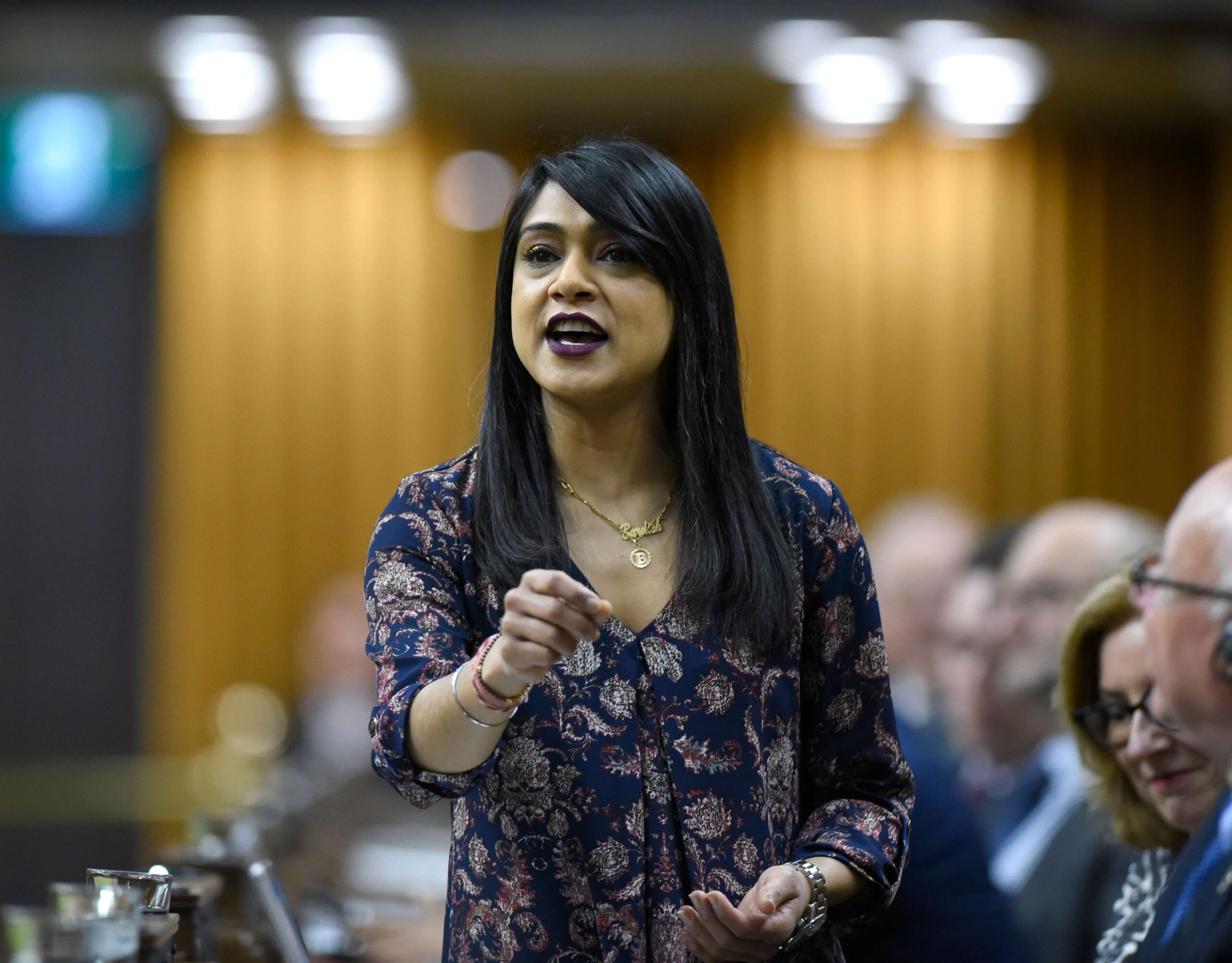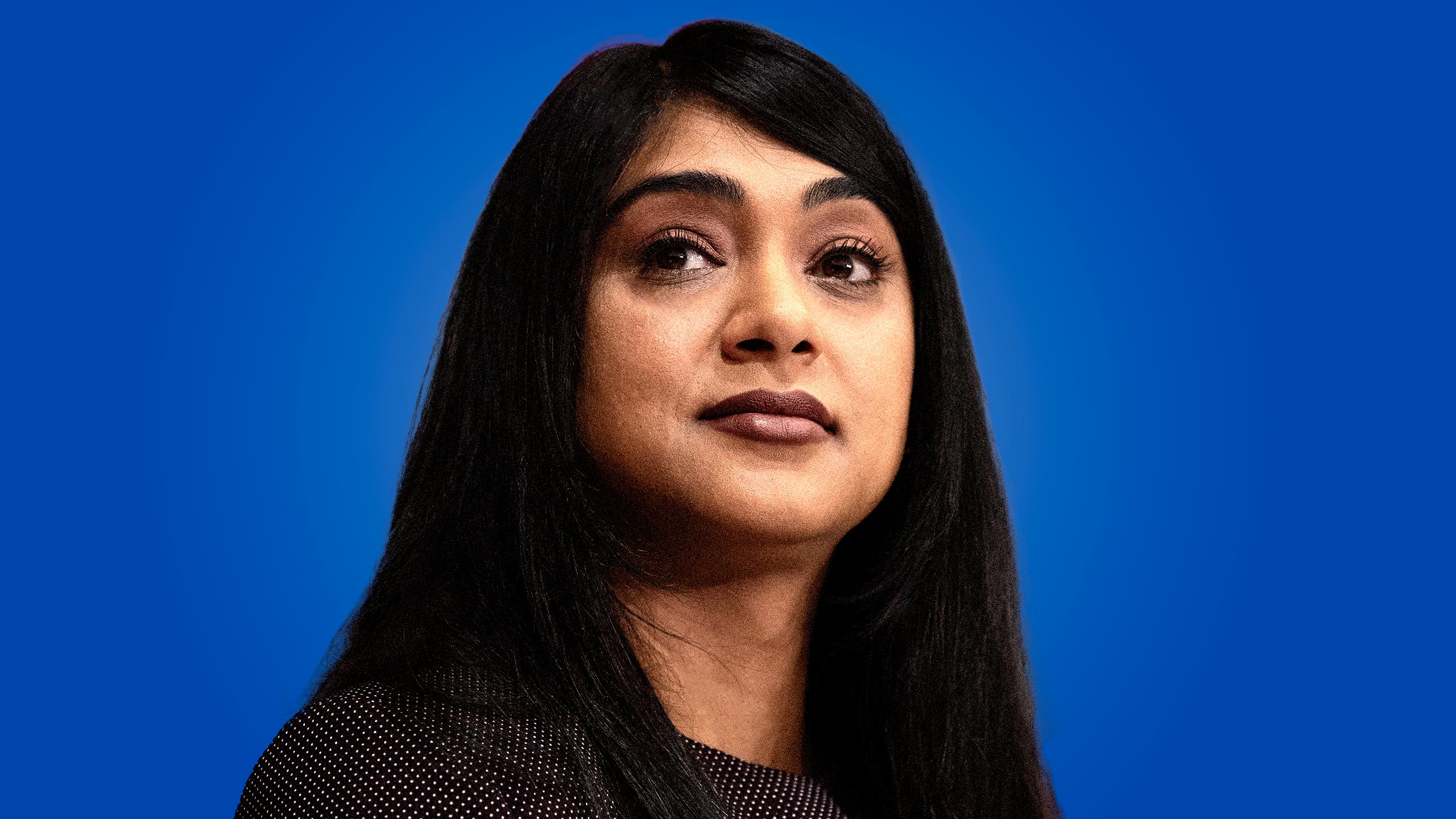On Nov. 20, 2019, following the re-election of Justin Trudeau’s Liberal Party, Bardish Chagger assumed her role as Canada’s first Minister of Diversity and Inclusion and Youth. A second-term MP first elected in Waterloo, Ontario, in 2015, Chagger came into the newly created role with plenty on her plate: She’s the minister in charge of ensuring that diversity and inclusion are front and centre within the federal cabinet—and that’s no easy task. Her portfolio includes responsibility for the federal LGBTQ2 Secretariat, the Youth Secretariat and the recently formed Anti-Racism Secretariat. And in a year when marginalized communities were acutely affected by myriad factors—from the COVID-19 pandemic to the ongoing calls for anti-racism efforts in policing and governance—Chagger’s responsibilities are especially important to LGBTQ2S+ communities.
As her first year as Minister of Diversity and Inclusion and Youth comes to an end, Xtra’s Fae Johnstone sat down with Chagger to reflect on her work so far and explore what we can expect to see from the federal government on LGBTQ2S+ issues in 2021 and beyond.
As the first Canadian Minister for Diversity and Inclusion and Youth, you stepped into a role you had the opportunity to define for yourself. What does the role mean for LGBTQ2S+ communities specifically?
In Canada, we know that diversity is our strength. The diversity of experiences and perspectives in Canada is near and dear to my heart, and we [as a government] want to ensure that we’re creating truly inclusive spaces for all Canadians. We know the decisions we make will impact youth a lot longer than a lot of the lawmakers and decision-makers currently enacting legislation. My role is to ensure that youth and underrepresented voices are part of that decision-making and are helping shape our country and future into something that they want to be part of.
I fought for marriage equality when no political party, including a Liberal Party, was there yet. This is personal for me. I hope to continue the good work of the past five years and create a truly inclusive Canada where everyone can be their authentic selves.
Why do you believe it’s important to have a minister specifically dedicated to issues of diversity and inclusion in Canada?
Because we need to keep moving forward. Right now, with the pandemic as horrible as it has been, the whole world has been impacted, but certain segments disproportionately so. And that’s where the inclusion portfolio gets exciting, because we have the opportunity to build not only better, but in a way that is more consciously inclusive.
“We are committed to pushing for a more consciously inclusive approach because throughout the history of our country, we haven’t done that well.”
Being mindful of who’s not at the decision-making table, who is not being considered—that’s where my role comes into play. And that’s why we’ve set up the LGBTQ2 Secretariat and other secretariats, so that there is a source within the government to work with all departments and agencies, as well as with provinces, territories, municipalities and Canadians to move diversity and inclusion forward. So much of my role is about bringing information from Canadians forward to the cabinet and other decision-makers. Because of that, I need to hear from you. I need to hear from your communities to inform where we should be going and what we should be doing.
Do you see tension in your role as the individual responsible for raising issues of inclusion within cabinet?
I am part of the Charter of Rights and Freedoms generation. It’s important that, if you believe in that document like I do, we have those honest and frank conversations. It’s not tense during cabinet conversations because there is an expectation from our prime minister for us to have those hard conversations and to push for our government to be even better.
We are committed to pushing for a more consciously inclusive approach because throughout the history of our country, we haven’t done that well. We know that there are systemic issues in our country. We know that systemic racism and discrimination exists. As people in leadership roles, we are always asking ourselves how we can do better, improve our approach and peel back discriminatory systems.
You came into this role building on four years of work by the Liberal government on LGBTQ2S+ issues. What would you say were the biggest successes of your government?
Definitely Bill C-16, which enshrined gender expression and gender identity into the Canadian Human Rights Act. That was exciting because it was long overdue and we were able to make it happen.
I was also really pleased when the prime minister brought a full voice to the cabinet table as a minister of diversity and inclusion. When we [re-]introduced Bill C-6 [the Act to Amend the Criminal Code] to ban conversion therapy [in October], that legislation was a big moment for me, too, because it was something we needed to do to protect Canadians and end such a harmful practice.

Credit: The Canadian Press/Justin Tang
Speaking of Bill C-6, what do you hope it will accomplish?
A crucial component of getting legislation right is actually listening to and engaging with Canadians. This legislation was created by and for LGBTQ2S+ communities. It was advocacy and survivor testimony that informed it. I am committed to honouring the stories and knowledge shared with me by survivors—people brave and courageous enough to share such harmful experiences.
Conversion therapy does not belong in Canada, and this legislation is in direct response to the one thing I heard over and over again in conversion with LGBTQ2S+ communities. Do some people want us to go further? Of course. Do some people think we’ve gone too far? Of course. But what we have done is introduce legislation that has passed its second reading and is at committee. So, let’s make sure that there’s not another generation that has to undergo such a harmful and destructive practice that we know doesn’t work and that we know doesn’t belong in Canada. We need to get it out of our country.
Acknowledging that legislation is but the first step in eradicating an insidious practice like conversion therapy, what are your government’s intended next steps, assuming Bill C-6 becomes law?
The legislation itself is actually quite comprehensive. It bans the practice for minors in Canada, and will make it so you cannot force an adult to undergo conversion therapy. Under C-6, you won’t be able to take a child outside of the country for the purpose of conversion therapy, and you cannot advertise conversion therapy services. What the legislation does not do is stop you from having conversations about your identity. Rather, it stops people from forcing an individual to change who they are. Nonetheless, it’s not just about legislation. At the end of the day, no law is going to change who we are as individuals or as a country—we have to change ourselves. Each of us has a responsibility to do so.
“At the end of the day, no law is going to change who we are as individuals or as a country—we have to change ourselves.”
In terms of what comes next to ensure we truly eradicate conversion therapy, I think that’s a conversation we have to have with community members because they know their needs best. We heard loud and clear from community members and survivors that they don’t want anyone else to go through what they went through.
The LGBTQ2 Secretariat recently launched the LGBTQ2 Survey, which allows any queer, trans and Two-Spirit Canadian over the age of 16 to weigh in on the creation of a National LGBTQ2 Action Plan. What is your vision for the action plan?
The action plan is going to be the tool to guide us forward as we continue to work towards equality for LGBTQ2S+ Canadians. Our goal is not just to empower, but to enable community to call us out so that we’re actually creating more consciously inclusive spaces.
I want to ensure that at any given time we don’t predetermine the outcome, because this has to be a genuine approach and a meaningful conversation. I believe that it has to be led by community. In addition to the survey, we will also be hosting a series of roundtables and discussions led by the LGBTQ2 Secretariat in the new year to get as many perspectives into this conversation as possible.
Since your party came into power in 2015, we’ve seen unprecedented efforts from the government to deliver on LGBTQ2S+ equality in Canada. But what would you say to LGBTQ2S+ Canadians who argue that, in the face of pervasive homelessness and poverty, staggering mental health problems and terrifying rates of violence, your government is not doing enough for their communities?
I think people who have that thought process are entitled to it. I think it belongs to them and they have a right to their own perspective. But I think the relationships we are building are important. Over the previous decades, many relationships with LGBTQ2S+ communities have been broken, and we have a responsibility and opportunity to restore and repair them.
I know some of our actions might seem symbolic, but in all honesty, symbolism matters. Our prime minister appointing a Special Advisory on LGBTQ2 issues and adding a full minister to the cabinet table to ensure diversity and inclusion are always part of the conversation—these things have an impact. We raised the pride flag for the first time on Parliament Hill in June 2016. That was massive—something many people said wouldn’t ever happen.
We are making the effort to dismantle discriminatory systems and build systems that actually include more people. The LGBTQ2 Community Capacity Fund, which provided dedicated funding to LGBTQ2S+ organizations across Canada, is something that communities have been asking for—and we responded. That’s money going right to the organizations doing the work on the ground.
All of that being said, I think we have to keep advocating for more and we have to keep fighting for better. Even in a country where we’ve done good work, where we have gender parity at the cabinet table, there’s more work to be done. We’re not done yet.
I would be remiss if I didn’t mention the blood ban, which stops many LGBTQ2S+ Canadians—in particular trans people and men who have sex with men—from donating blood unless they abstain from sexual activity for three months. Ending the blood ban was a Liberal election promise in 2015, but it nonetheless remains. What are your plans related to the blood ban, and what would you say to LGBTQ2S+ Canadians who are disappointed by your government’s failure to end such a discriminatory policy?
I remember when we made the announcement [that the abstinence period was being reduced to] one year and I was not satisfied. Three months is better, but we are pushing for more—and we will keep pushing.
“We have allies in all caucuses that want to see the end of the blood ban happen.”
We are committed to pushing this forward because it was a campaign commitment and because we believe in evidence-based decision making. We don’t believe in making our decisions based on ideology.
What we have done is fund 15 research projects to help find the evidence to eliminate the ban. We have allies in all caucuses that want to see this happen. We don’t want to preempt it, but we believe that we can get there.
Assuming your government mandate lasts till 2023, what do you hope to have accomplished by then? How do you hope life will have changed for LGBTQ2S+ people in Canada?
I hope we can lay the foundation for people to live their authentic lives and be proud of who they are. I will be pleased if our government departments and agencies start ensuring that decision-making tables are more representative of our country. In the meantime, we will continue to create and implement better policies. We’re seeing progress, but progress is not the goal. The goal is a truly inclusive Canada.
What would you say to the 16-year-old trans kid who just got kicked out, is struggling to find a place to stay that night and who looks up and says: “Okay, there’s a pride flag, but I’m still homeless”?
I would want them to know that I see them, I hear them and I’m going to work to make sure that no one ever has to go through that experience.
We have our national housing strategy, and we continue to build on it because everyone deserves a safe place to call home. I know that during the pandemic, being in a house with family that doesn’t accept you is difficult, challenging and not fair to you. We want you to have a safe place.
I carry these stories with me. As much as it might feel like you’re being left behind, I can promise you that you are top of mind for our government because our job is to be there, working with and listening to community. I will always be an ally for LGBTQ2S+ people who want nothing more than to lead happy and authentic lives. I’m going to keep fighting for you. We don’t want to leave people behind. The way we move forward is by bringing everybody along with us, and that’s what we’re going to do.


 Why you can trust Xtra
Why you can trust Xtra


